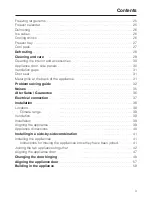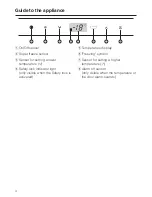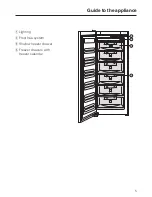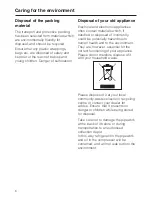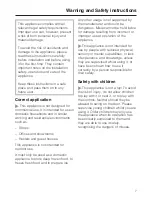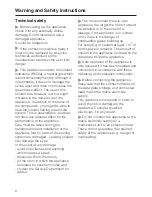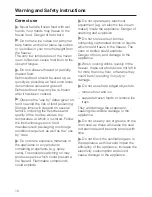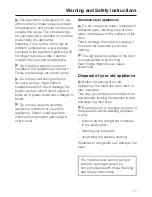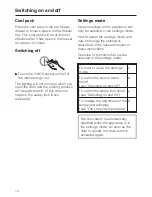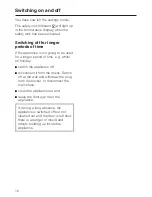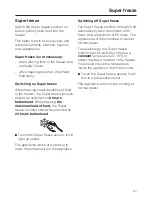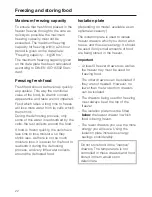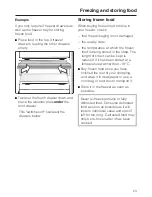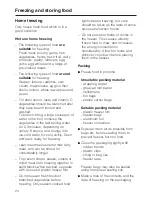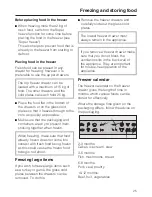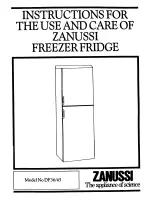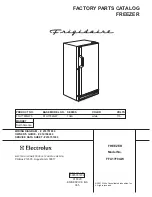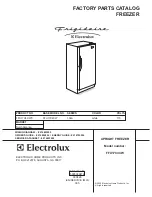
~
The appliance is designed for use
within certain climate ranges (ambient
temperatures), and should not be used
outside this range. The climate range
for your appliance is stated on the data
plate inside the appliance.
Installing it in a room with too low an
ambient temperature, e.g. a garage,
can lead to the appliance switching off
for longer periods so that it cannot
maintain the required temperature.
~
Do not place electric heaters or
candles in the appliance to defrost it.
These can damage the plastic parts.
~
Do not use defrosting sprays or
de-icers, as they might contain
substances which could damage the
plastic parts or which could cause a
build-up of gases and pose a danger to
health.
~
Do not use a steam-cleaning
appliance to defrost or clean this
appliance. Steam could reach the
electrical components and cause a
short circuit.
Stainless steel appliances
~
Do not use sticky notes, transparent
adhesive tape, masking tape or other
types of adhesive on the surface of the
door.
These damage the surface, causing it
to lose its dirt repellent protective
coating.
~
The high-quality surface of the door
is supsceptible to scratching.
Even fridge magnets can cause
scratching.
Disposal of your old appliance
~
Before disposing of an old
appliance, first make the door latch or
lock unusable.
This way you will prevent children from
accidentally locking themselves in and
endangering their lives.
~
Be careful not to damage any part of
the pipework whilst awaiting disposal,
e.g. by
– puncturing the refrigerant channels
in the evaporator.
– bending any pipework.
– scratching the surface coating.
Splashes of refrigerant can damage the
eyes.
The manufacturer cannot be held
liable for damage caused by
non-compliance with these Warning
and Safety instructions.
Warning and Safety instructions
11



